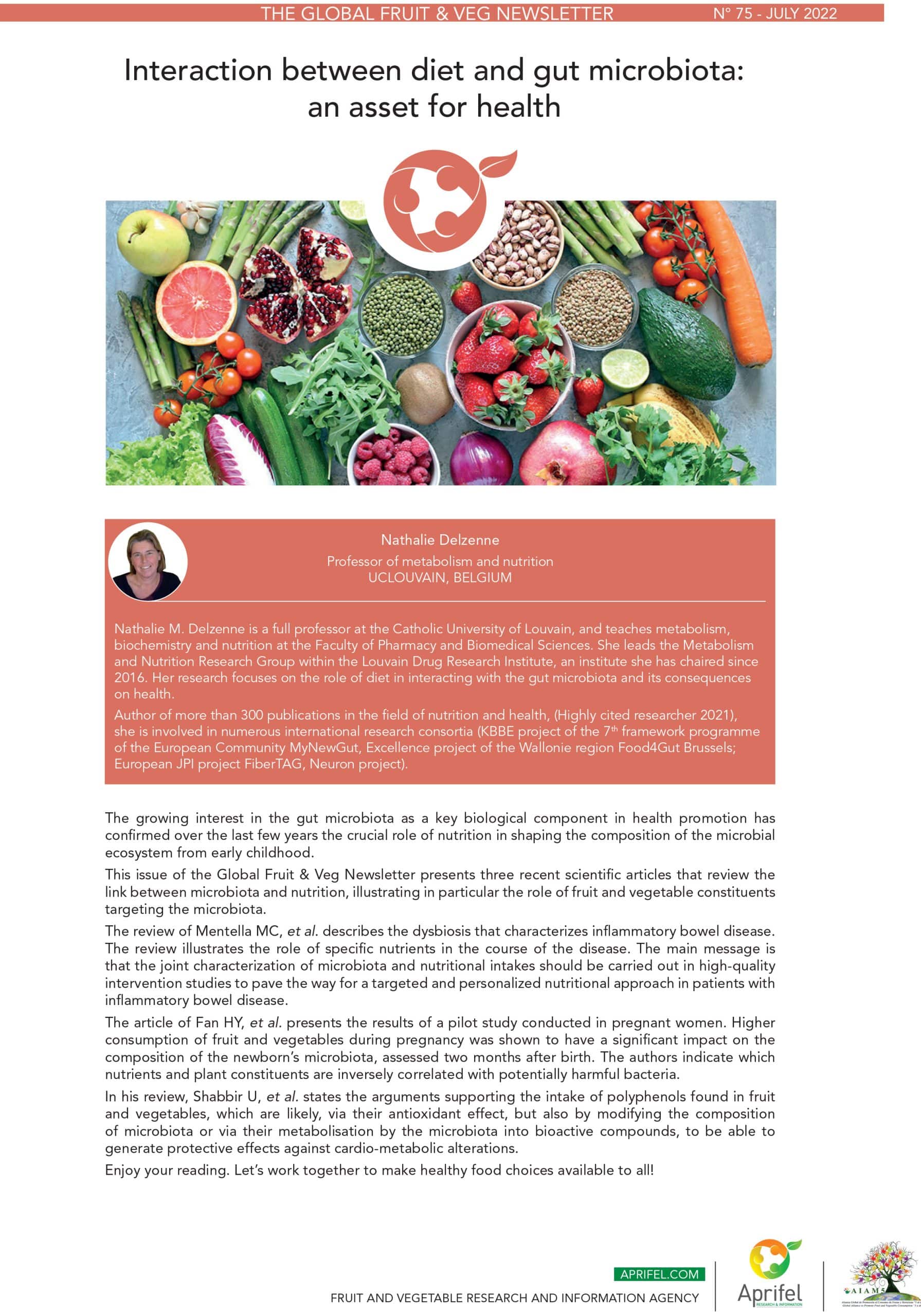Scientific news
Discover five recent scientific articles from our food, health and sustainability watch.

The Greek ATTICA study conducted from 2001 to 2012 among 3,042 healthy adults (Athens) assessed the association between vegetable consumption and the incidence of type 2 diabetes at 10 years. After adjusting for several variables, including general dietary habits, this work shows that participants who consume at least 4 servings of vegetables per day have a 0.42 times lower risk of developing type 2 diabetes. The observed benefits were greater in women than in men. When comparing by type of vegetable, the most significant associations were observed for Alliaceae in women and for red/orange/yellow vegetables and legumes in men.

A study carried out on 1,792 children (3-6 years) in the Netherlands assessed the association between lifestyle and overweight in children. Their environment and socio-economic status were also considered. Diet, sleep duration, screen time and outdoor play were assessed by questionnaires. Sedentary and physical activity levels were measured by accelerometer. Three types of lifestyles were identified: (1) “highly active”, (2) “little screen time, lots of sleep and healthy eating”, and (3) “lots of outdoor play”. Children corresponding to behavior (2) had a reduced risk of being overweight and a lower BMI at 10-11 years of age, regardless of their socio-economic status. Thus, low screen time, high sleep duration and a healthy diet form a favorable combination for preventing overweight in children.

A cross-sectional observational study in Poland (200 participants) compared the composition of the microbiota and its functional properties in two groups of volunteers. The first group followed a healthy dietary pattern (n=100), the second a Western-type diet (n=100). The composition of the gut microbiota was different between the two groups. The abundance of potentially favorable gut microbiota was mainly associated with a high consumption of vegetables, fruit, and fiber (higher relative abundance of Firmicutes and Faecalibacterium, lower relative abundance of Bacteroidota and Escherichia-Shigella). Conversely, that of potentially unfavorable gut microbiota is mainly associated with high intakes of added sugars and soft drinks and low fiber.

A study in Finland assessed the long-term effects of an intervention on food consumption and nutrient intake from childhood to adolescence. Participants, aged between 7 and 9 years at the baseline, were followed for 8 years and divided into two groups: intervention (n=306) and control (n=198). In the intervention group, children and their families received personalized support combining counselling and practical application aimed at improving eating habits, increasing the level of physical activity, and reducing the sedentary lifestyle of the family. This intervention improved diet quality from childhood to adolescence. In the intervention group, consumption of vegetables, fruit, and berries and intakes of vitamin C and folate increased. In the control group, vegetable consumption remained unchanged, while fruit and berry consumption, and vitamin C and folate intake decreased.

To facilitate access to healthy food for low-income populations, the federal SNAP programme provides vouchers to purchase certain foods. A two-year randomised controlled trial was conducted at 77 farmers’ markets to test the impact of fruit and vegetable (FV) incentive vouchers, randomly issued at varied incentive levels (baseline, moderate, or high) among a group of SNAP recipients (n=2,968). Overall household food purchases and in particular fruit and vegetable purchases, food consumption, food insecurity, health status, market expenditure and demographics were monitored. This work confirms the existing literature. Although 82% of the participants reported food insecurity during the year, this type of financial incentive offered through farmers’ markets has significant positive effects on fresh fruit and vegetable consumption. Also, the more the incentive level is high, the more purchases and consumption are high. The authors therefore emphasize the need to include this type of incentive scheme in future policies in order to provide more equitable access for people with limited food budgets.

